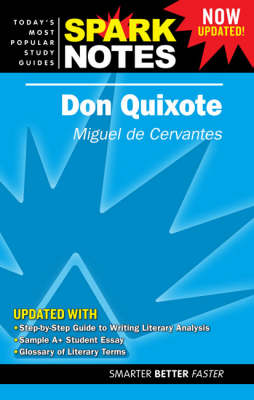Reviewed by Michael @ Knowledge Lost on
From the very start, we get a sense that maybe Don Quixote is crazy. In psychology the term Quixotism relates to “over-idealism” and is often used in reference to someone with a naïve romanticism towards utopianism. The term “tilting at windmills” refers to a scene near the beginning of the novel where Don Quixote races off to fight giants that were actually windmills. If you consider that Don Quixote went mad from all the books he was reading and set off to try and fix the world, then this could be used as a metaphor towards Miguel de Cervantes Saavedra own feeling toward the same books, but rather than fixing the world he wrote Don Quixote. This brings to mind the quote from Toni Morrison “If there’s a book that you want to read, but it hasn’t been written yet, then you must write it.”
Don Quixote, like many books of the time, was read to children; this is a novel I could never imagine being read to any child now. However one thing that makes this novel so great is that there are so many interpretations to be taken from the text. Harold Bloom (who wrote the introduction to my copy of the book) calls this a work of radical nihilism and anarchy, in the way it glorifies fantasy over reality. Calling him the Sorrowful Knight whose objective is that “He is at war with Freud’s reality principle, which accepts the necessity of dying.” The translator of the edition I read, Edith Grossman, has said, “When I first started reading the Quixote I thought it was the most tragic book in the world, and I would read it and weep”. However when she worked on the translation she remembered “sitting at my computer and laughing out loud.”
After the French Revolution a popular interpretation of the novel was that it was about ethics and righting the wrongs of society. While later on it was a social commentary which always lead to the discussion of whose side Cervantes was on. You could even pull some religious or feminist themes out of this novel but for me, I read this as a Marxist text. The relationship between Don Quixote and Sancho Panza was a good representation of the class struggle. It is evident that Quixote needed Sancho Panza more than Panza needed him. Sancho Panza was there to rise the ranks of society while Don Quixote was be completely lost without his squire.
I cannot talk about Don Quixote without mentioning the way that Miguel de Cervantes played with intertextuality. This novel is split into two parts; the first part was originally published in 1605. In 1614 a second volume was released by an anonymous author. It is believed that Miguel de Cervantes started writing his second part after this and in 1615 it was released. While part one was a spoof of the literature that annoyed him, part two was more an attack on this unauthorised story of Don Quixote. It even made references to this scandal as Don Quixote explores the concept of someone writing about him.
This is the type of novel that deserves to be read again and again. Every reading will probably offer something different and this review is a reference point of what I got out of reading this book the first time around. If you get the chance, I recommend reading this with someone. I read this with Hilary from Yrrobotfriend and the discussions were the best part of this reading experience. While reading this novel I enjoyed part one the most but on reflection, I think part two offers more.
This review originally appeared on my blog; http://www.knowledgelost.org/book-reviews/genre/classic/don-quixote-miguel-de-cervantes-saavedra/
Reading updates
- Started reading
- 5 May, 2016: Finished reading
- 5 May, 2016: Reviewed
